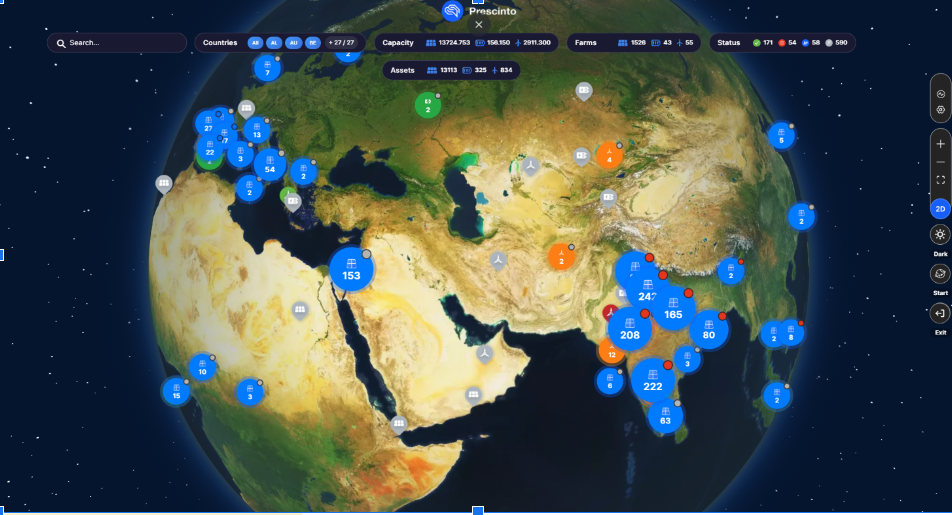Enhance Your Wind O&M Strategy with Advanced Availability Management System for Wind

- September 20, 2023
- Prescinto
How it Works
The AMS tool is configured with four different KPIs commonly used in wind O&M contracts, including Actual WTG Availability, Contractual Availability, Grid Availability, and Resource Availability.
Actual WTG Availability
This metric measures the availability of the wind turbine generator (WTG) based on the number of hours assigned to available and unavailable categories. The calculation of availability is done by dividing the number of available hours by the sum of available and unavailable hours, expressed as a percentage. This time-based approach does not take into account wind speed variations, which may affect turbine availability during high wind periods.
Actual WTG Availability % = Available Hours / (Available Hours + Unavailable Hours)*100
Contractual Availability
This metric calculates the availability of the wind turbine based on the number of hours under the contractually available and unavailable categories. The formula for contractual availability may vary based on different site conditions and client requirements, and Prescinto can accommodate different formulas for different clients. The categories of available and unavailable hours may vary between each customer and wind farm.
Contractual Availability % = Contractual Available Hours / (Contractual Available Hours + Contractual Unavailable Hours)*100

Grid Availability
This metric reflects the reliability of the grid for the wind farm and takes into account grid outages or disruptions outside the parameters outlined in the grid connection agreement, as well as the time it takes for the wind farm to resume normal operations after an outage. Grid availability is expressed as a percentage and is used to adjust energy output for energy losses during grid downtime.
Resource Availability
This metric tracks the status signals for high and low wind speeds, considering the period where the wind speed is within the cut-in and cut-out wind speeds. Prescinto takes into account event logs to calculate resource availability, and in the absence of the signal from the WTG, it is assumed to be 100%.
The event logs, category mapping, and availability mapping also play a crucial role in categorizing and determining availability management.
Event Logs
In addition to the four KPIs, the AMS tool also takes into consideration event logs to calculate availability. Event logs record each state, fault, and duration, and any time duration between an Error state and the next ready state is considered downtime. The AMS tool allows for the manual allocation of downtime across multiple primary and secondary events, ensuring that the downtime is accurately recorded and reported.

Category Mapping
The AMS tool supports both IEC and non-IEC following customers, and Prescinto collects the mapping for the downtime event vs. category during the onboarding of customer assets. The tool auto-populates the categories, ensuring that the correct mapping is applied on a daily basis.
Availability Mapping
Availability mapping refers to the allocation of categories to an available or unavailable bucket based on the contract or formula provided by the customer. The AMS tool acquires the contract information during the onboarding of assets and provides default allocations, but users can also update the allocations if necessary.
Key Features
- Automated monitoring and reporting of KPIs
- Time-based and contractual availability calculations
- Consideration of event logs and grid and resource availability
- Support for both IEC and non-IEC following customers
- Ability to update availability mapping
- Manual allocation of downtime across multiple events
Benefits
- Improved visibility into turbine performance
- A better understanding of contractual availability
- Increased accuracy of downtime reporting
- Optimized wind O&M strategy
- Improved resource utilization
Conclusion
The Availability Management System (AMS) in the Prescinto platform is a powerful tool that helps wind energy operators optimize their wind turbine performance and improve their overall wind O&M strategy. With its advanced monitoring and reporting features, the AMS provides increased visibility into turbine performance and improved accuracy in downtime calculations.
- Topics: Wind
About Author





